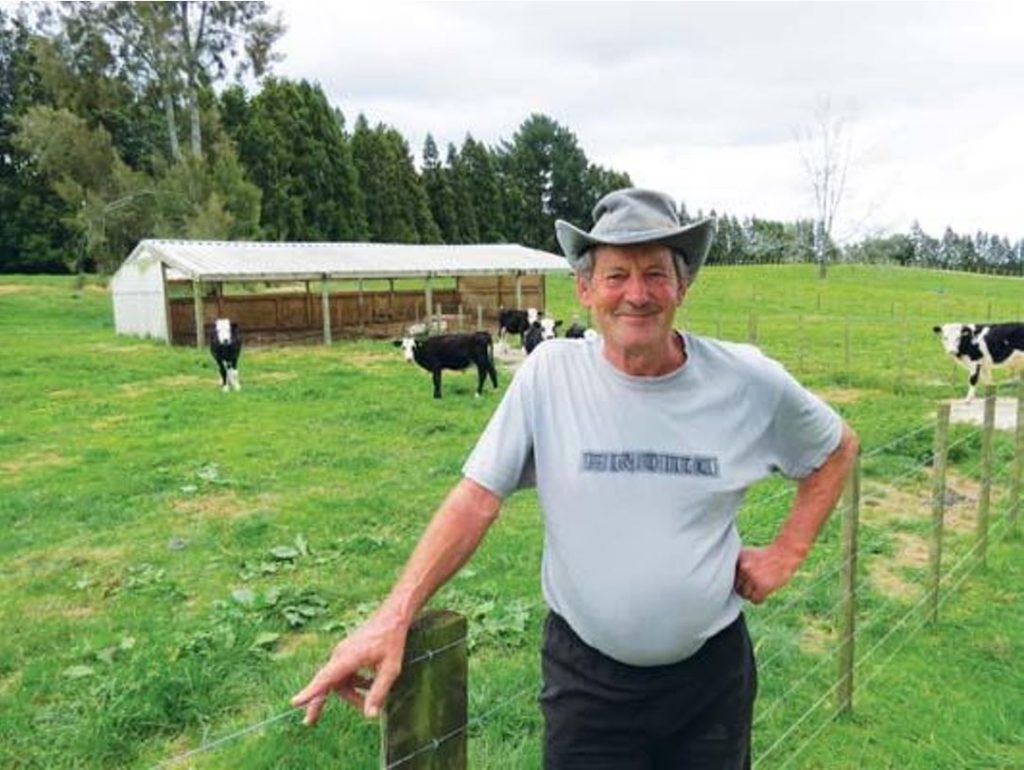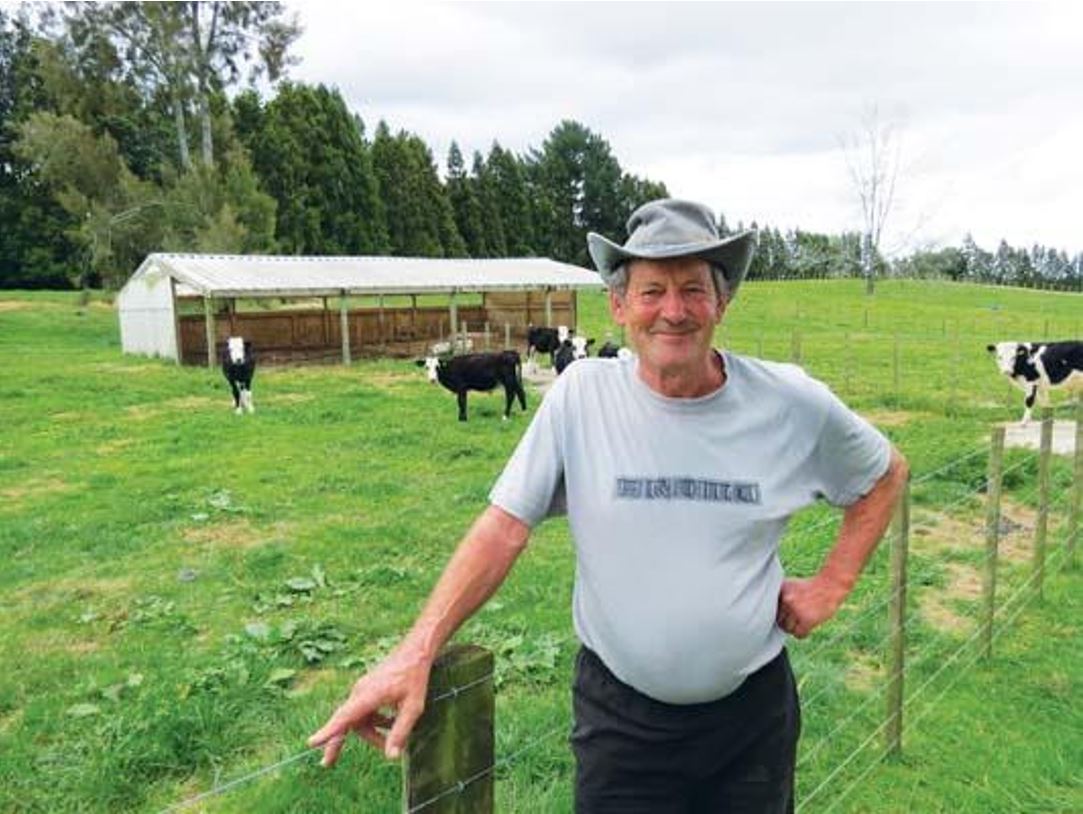Ray Morreel rears 700 calves on 12.7ha in the Bay of Plenty every spring. Last year, he lost only six.
He’s had a mortality rate of less than 1% for three years running and said the secrets to success were minimising the risk of any bugs coming into his system and doing the basics right.
Ray, 64, who was a butcher by trade, and his wife, Ann, bought the lifestyle block halfway up the Kaimai Ranges on the Tauranga side 20 years ago. It’s sheltered from westerly winds by neighbouring orchards and forestry and so is a perfect environment for rearing calves. Ray fenced it, built an 80-calf shed along with smaller shelters in the paddocks, and installed three silos for calf meal. He installed a purpose-built fireplace in the calf shed, which he lights every morning to heat the
water up to more than 40C to mix with milk powder.
“You can see the steam coming off the milk. The calves love it. It can get cold up here and if a calf is cold it’s using energy to keep warm.”
It is an organised, efficient system, which Ray has perfected during the past 14 years of rearing calves. The fences have been upgraded recently with another 1200 battens added and the calf shed is cleaned out and laid with 1m-deep new shavings in April, ready to go for spring.
Ray buys 300 Friesian bulls and 400 whiteface calves direct off five local farmers every year. He arranges the price with the farmers at the start of the season, then contracts out 500 calves to ensure he covers his costs. Some people get into calf rearing to make a quick buck, but they don’t take all the costs into account, or the health risks, he said.
“If you haven’t got contracts you can get caught out; the market can go backwards pretty quickly. You’ve got to keep a close eye on it.”
The health risks are enormous, which is why he never buys calves from saleyards, but collects and rears all 700 calves by himself. Bringing home a bug like salmonella or rotavirus would be a catastrophe.
“I do everything myself and I don’t have time to look after 40 sick calves,” he said. “I’m up at 4.30am seven days a week. I feed the calves and am on the road by 7.30am to pick up calves.”
For the first nine years he fed the calves twice a day, but five years ago he cut back to once-a-day feeding from four days old. They’re outside after two weeks and weaned off after 40 days, yet he has no problems delivering 100kg calves in 12 weeks.
The calves are fed on milk powder, meal, and hay and he also treats every calf with 5ml/day of DairyCare Cow and Calf Formula, a manuka honey and aloe vera product, which he uses as a preventive remedy.
“I budget pretty hard,” he said. “I have to because I can’t give them litres of colostrum a day, but DairyCare is not a cost. If a product works it should be saving you money. The day it doesn’t, you don’t buy it.”
He thinks it helps the calves change their diet from colostrum to milk powder. It also helps alleviate scours and Ray hasn’t used electrolytes for three years. But it’s not a miracle cure for a critically ill calf, and healthy animals from the start are a must along with good hygiene habits. He cleans his truck between trips, spreads antiseptic powder in the calf shed, washes his
milk feeders in cold water every day and gives them a hot wash once a week. He cleans the water troughs regularly, brushing them out in the paddock. The troughs in the calf shed have a plug at the bottom for easy drainage to clean out the
shavings the calves kick into them.

Ray rears 700 calves every year with less than 1% mortality.
“I’m not paranoid,” he said. “As long as you do the basic things right, you’ll be okay. You get out what you put in. If you don’t put in much effort, don’t expect great results.”
Sheryl Brown

